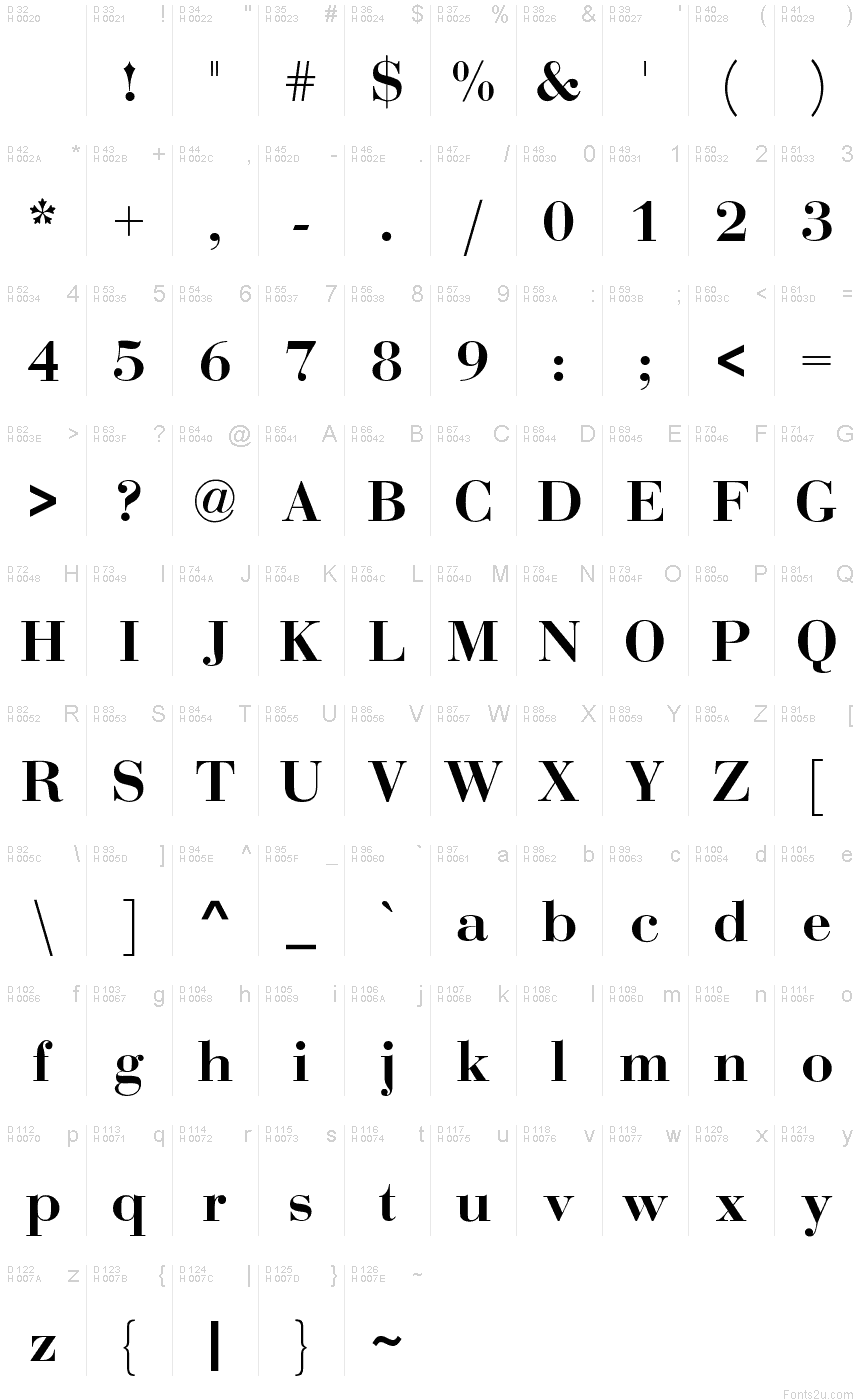
In Europe, they are more often used in body text. Massimo Vignelli stated that "Bodoni is one of the most elegant typefaces ever designed." In the English-speaking world, "modern" serif designs like Bodoni are most commonly used in headings and display uses and in upmarket magazine printing, which is often done on high-gloss paper that retains and sets off the crisp detail of the fine strokes. Versions of Bodoni that are intended to be used at text size are "Bodoni Old Face", optimized for 9 points ITC Bodoni 12 (for 12 points) and ITC Bodoni 6 (for 6 points).
This is very common when optical sizes of font intended for use at display sizes are printed at text size, at which point the hairline strokes can recede to being hard to see. Some digital versions of Bodoni are said to be hard to read due to "dazzle" caused by the alternating thick and thin strokes, particularly as the thin strokes are very thin at small point sizes. They came to be called 'modern' serif fonts since the mid-20th century, they are also known as Didone designs. However, these fonts were not updated versions of Roman or Renaissance letter styles, but new designs. When first released, Bodoni and other didone fonts were called classical designs because of their rational structure. Bodoni had a long career and his designs changed and varied, ending with a typeface of a slightly condensed underlying structure with flat, unbracketed serifs, extreme contrast between thick and thin strokes, and an overall geometric construction. Bodoni followed the ideas of John Baskerville, as found in the printing type Baskerville-increased stroke contrast reflecting developing printing technology and a more vertical axis-but he took them to a more extreme conclusion. Bodoni's typefaces are classified as Didone or modern. Actual font is the digital Bodoni Monotype published in 1999.īodoni is the name given to the serif typefaces first designed by Giambattista Bodoni (1740–1813) in the late eighteenth century and frequently revived since.


Facsimile of lines from Dante's " La Vita Nuova" first published with Bodoni types by the Officina Bodoni in 1925.


 0 kommentar(er)
0 kommentar(er)
